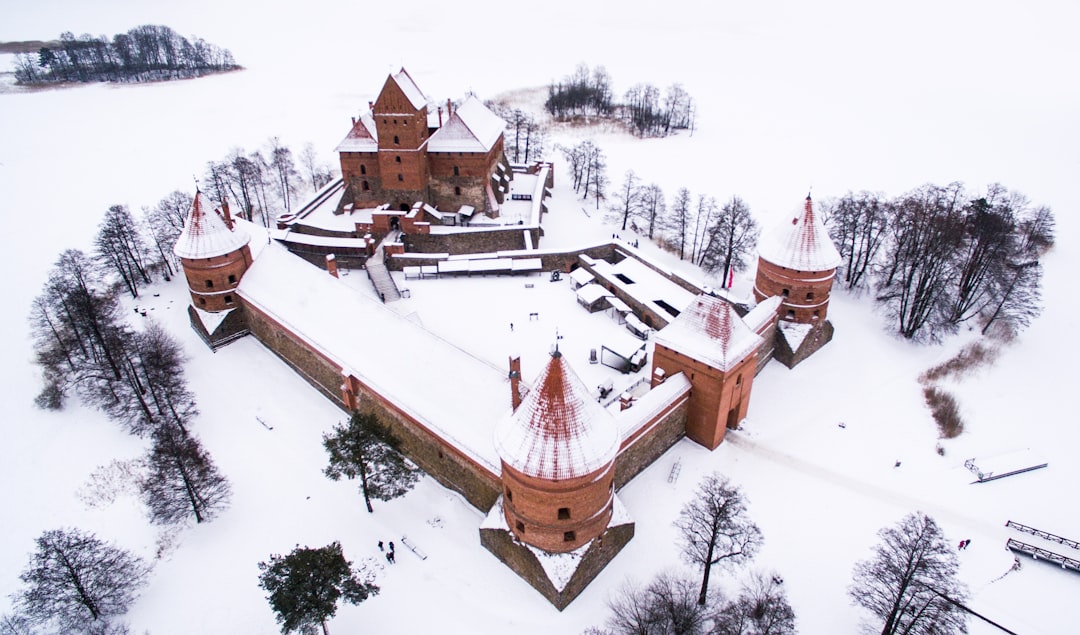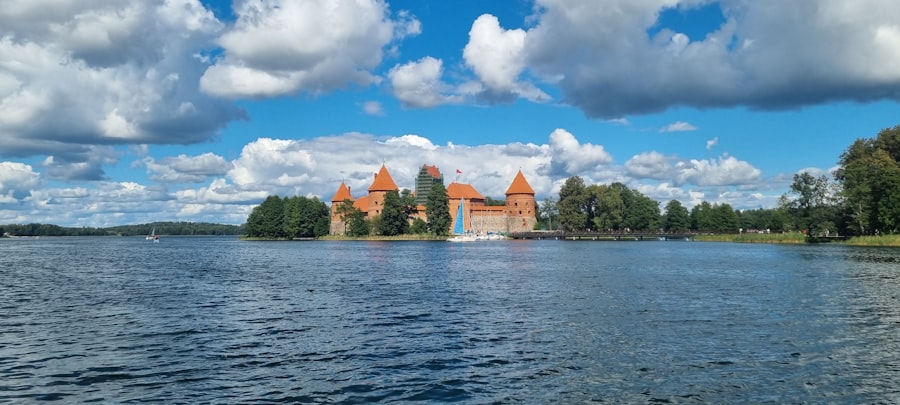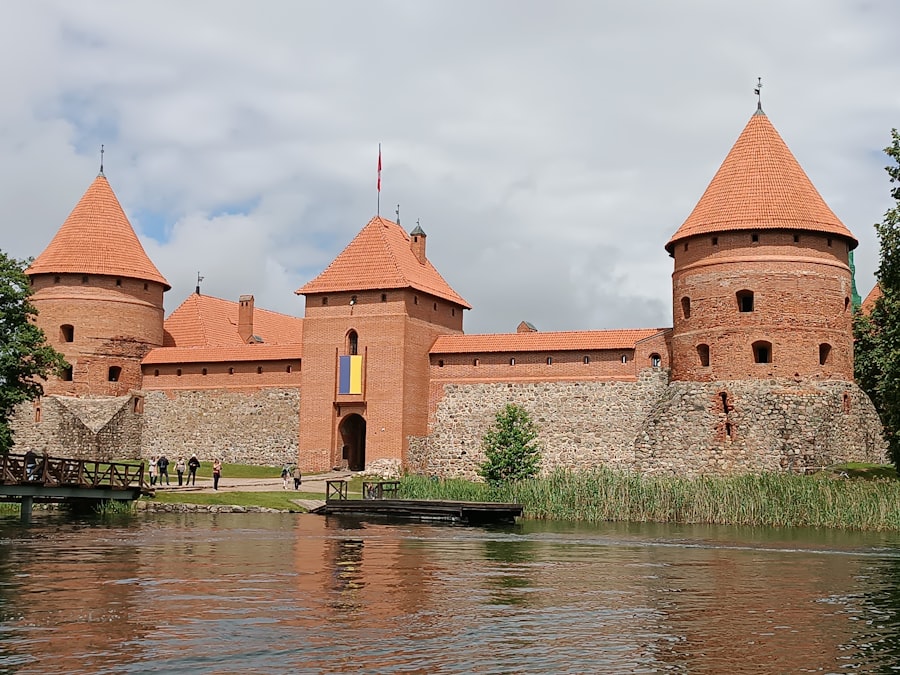
Lithuania, a small yet vibrant country nestled in the heart of the Baltic region, boasts a rich tapestry of history, culture, and natural beauty. Bordered by Latvia to the north, Belarus to the east and south, Poland to the south, and the Baltic Sea to the west, Lithuania is one of the three Baltic states, alongside Latvia and Estonia. Its capital, Vilnius, is renowned for its baroque architecture and a UNESCO World Heritage Site, reflecting the country’s complex past and diverse influences.
With a population of approximately 2.8 million, Lithuania is characterized by its unique blend of Eastern and Western European traditions, making it a fascinating destination for travelers seeking both adventure and cultural enrichment.
From the Grand Duchy of Lithuania, which was one of the largest countries in Europe during the 14th century, to its eventual incorporation into the Polish-Lithuanian Commonwealth, Lithuania’s history is marked by periods of both independence and foreign domination.
Today, Lithuania stands as a proud member of the European Union and NATO, having regained its independence from the Soviet Union in 1990. This journey towards sovereignty has shaped a national identity that is deeply rooted in its language, traditions, and a resilient spirit that continues to thrive in modern society.
Key Takeaways
- Lithuania is a Baltic country known for its rich history, beautiful landscapes, and vibrant culture.
- The country has a fascinating history, with influences from various cultures and periods, including the medieval era and Soviet occupation.
- Must-visit places in Lithuania include the capital city of Vilnius, the historic Trakai Island Castle, and the picturesque Curonian Spit.
- Natural wonders and landmarks in Lithuania include the stunning Hill of Crosses, the beautiful Aukstaitija National Park, and the unique geological formations of the Lithuanian Karst.
- Traditional Lithuanian cuisine features hearty dishes like cepelinai (potato dumplings) and kugelis (potato pudding), and the country hosts lively festivals such as Uzgavenes and Jonines. When traveling in Lithuania, it’s important to respect local customs and traditions, and to be prepared for varying weather conditions.
Historical and Cultural Facts
Lithuania’s history is a compelling narrative that intertwines with the broader European context. The Grand Duchy of Lithuania emerged in the 13th century and became a significant power in Eastern Europe, extending its influence over present-day Belarus, Ukraine, and parts of Poland. The union with Poland in 1569 created a formidable entity that played a crucial role in European politics until its eventual partition in the late 18th century.
This historical backdrop is essential for understanding Lithuania’s cultural evolution, as it absorbed various influences from neighboring nations while maintaining its distinct identity. The cultural heritage of Lithuania is rich and diverse, with folk traditions playing a vital role in the national consciousness. The country is known for its vibrant folk music, intricate textile arts, and traditional dances that reflect its agrarian roots.
Festivals such as Užgavėnės, celebrated before Lent, showcase colorful masks and costumes, symbolizing the end of winter and the arrival of spring. The preservation of the Lithuanian language, one of the oldest languages in Europe, is another testament to the nation’s commitment to its cultural identity. The language has survived numerous challenges over centuries of foreign rule, and today it serves as a unifying force for Lithuanians both at home and abroad.
Must-Visit Places in Lithuania

When exploring Lithuania, one cannot overlook Vilnius, the capital city that serves as a cultural and historical hub. The Old Town of Vilnius is a UNESCO World Heritage Site characterized by its cobblestone streets, stunning churches, and vibrant squares. The iconic Gediminas Tower offers panoramic views of the city and stands as a symbol of Lithuanian resilience.
Visitors can also explore the impressive Vilnius Cathedral and its bell tower, which are central to the city’s architectural landscape. The bohemian district of Užupis, known for its artistic community and quirky charm, is another must-visit area that embodies the spirit of creativity that permeates Vilnius. Beyond Vilnius, Kaunas is another city rich in history and culture.
Once the temporary capital during the interwar period, Kaunas features an array of modernist architecture that reflects its unique historical narrative. The Ninth Fort Museum provides insight into Lithuania’s tragic past during World War II, while the lively Laisvės Alėja (Liberty Avenue) offers a bustling atmosphere filled with shops, cafes, and street performances. Additionally, Trakai Castle, located on an island in Lake Galvė near Vilnius, is a stunning example of medieval architecture surrounded by picturesque landscapes.
This castle not only serves as a historical monument but also as a popular recreational area for locals and tourists alike.
Natural Wonders and Landmarks
| Landmark | Location | Height/Size | Year of Discovery |
|---|---|---|---|
| Grand Canyon | Arizona, USA | 277 miles long, 18 miles wide | 1540 |
| Great Barrier Reef | Australia | 133,000 square miles | 1770 |
| Mount Everest | Nepal/China | 29,029 feet | 1856 |
| Niagara Falls | Canada/USA | 167 feet | 1678 |
Lithuania’s natural beauty is as captivating as its urban landscapes. The Curonian Spit, a UNESCO World Heritage Site, is a narrow strip of land that separates the Curonian Lagoon from the Baltic Sea. This unique geographical formation features towering sand dunes, lush forests, and diverse wildlife.
Visitors can explore charming fishing villages like Nida and Juodkrantė while enjoying activities such as hiking, birdwatching, or simply relaxing on pristine beaches. The Curonian Spit is not only a haven for nature lovers but also an area steeped in folklore and local traditions. Another remarkable natural landmark is Aukštaitija National Park, known for its stunning lakes and dense forests.
This park is an ideal destination for outdoor enthusiasts seeking hiking trails, canoeing opportunities, or simply a peaceful retreat in nature. The park is home to various species of flora and fauna, making it a biodiversity hotspot within Lithuania. Additionally, the park features traditional wooden architecture that reflects the region’s cultural heritage.
Visitors can immerse themselves in local customs by participating in workshops or festivals that celebrate traditional crafts and lifestyles.
Traditional Lithuanian Cuisine and Festivals
Lithuanian cuisine is a reflection of its agricultural roots and regional diversity. Hearty dishes often feature potatoes, rye bread, beets, and dairy products. One of the most iconic dishes is cepelinai, or potato dumplings filled with meat or curd cheese, typically served with sour cream or bacon sauce.
Another beloved dish is šaltibarščiai, a cold beet soup that is particularly popular during summer months. This vibrant pink soup is not only refreshing but also showcases the use of beets—a staple ingredient in Lithuanian cooking. Festivals play an integral role in Lithuanian culture, celebrating everything from seasonal changes to historical events.
The Jūratė and Kastytis Festival honors local mythology with performances that recount tales of sea goddess Jūratė and her lover Kastytis. Meanwhile, the Vilnius Street Art Festival transforms urban spaces into vibrant canvases for artists from around the world. These festivals not only highlight traditional customs but also embrace contemporary art forms, creating a dynamic cultural landscape that attracts both locals and tourists alike.
Tips for Traveling in Lithuania

Traveling in Lithuania offers an array of experiences that cater to diverse interests. For those planning to visit Vilnius or other major cities like Kaunas or Klaipėda, public transportation is efficient and affordable. Buses and trams provide convenient access to various attractions while allowing travelers to immerse themselves in local life.
However, renting a car can be advantageous for exploring rural areas or national parks where public transport may be limited.
Lithuanians are known for their hospitality but appreciate politeness and respect for their traditions.
Learning a few basic phrases in Lithuanian can go a long way in establishing rapport with locals. Additionally, travelers should be aware of seasonal variations; summer months are ideal for outdoor activities while winter offers opportunities for skiing and enjoying traditional Christmas markets. Lithuania’s rich history, stunning landscapes, delectable cuisine, and vibrant culture make it an enticing destination for travelers seeking an authentic experience in Europe.
Whether wandering through medieval streets or savoring traditional dishes at local festivals, visitors will find that Lithuania offers a unique blend of old-world charm and modern vibrancy that leaves a lasting impression.
If you’re interested in exploring more about various global destinations and their unique attractions, you might find the article on “New Jersey Facts and Places to Visit” quite enlightening. Similar to the comprehensive insights provided in the Lithuania article, this piece offers a detailed look at New Jersey’s rich history, cultural sites, and must-see places. Whether you’re planning a trip or just curious about different parts of the world, this article is a great resource. You can read more about it by visiting New Jersey Facts and Places to Visit.
FAQs
What are some interesting facts about Lithuania?
– Lithuania is one of the three Baltic states, along with Latvia and Estonia.
– It is the largest and most populous of the Baltic states.
– The official language is Lithuanian, which is one of the oldest languages in the world.
– Lithuania was the last pagan country in Europe to convert to Christianity in the late 14th century.
What are some popular places to visit in Lithuania?
– Vilnius, the capital city, is known for its beautiful Old Town, which is a UNESCO World Heritage site.
– Trakai Island Castle, located on an island in Lake Galvė, is a popular tourist attraction.
– The Hill of Crosses is a site of pilgrimage and a symbol of peaceful resistance to the Soviet regime.
– The Curonian Spit, a UNESCO World Heritage site, is a unique sand dune peninsula shared by Lithuania and Russia.
What are some must-see sights in Lithuania?
– The Gediminas Tower in Vilnius offers panoramic views of the city and is a symbol of Lithuania’s capital.
– The Gate of Dawn is a historical city gate with a chapel containing an icon of the Virgin Mary.
– The Palace of the Grand Dukes of Lithuania is a reconstructed palace complex that offers insight into the country’s history.
– The KGB Museum in Vilnius provides a chilling look into the Soviet occupation of Lithuania.



